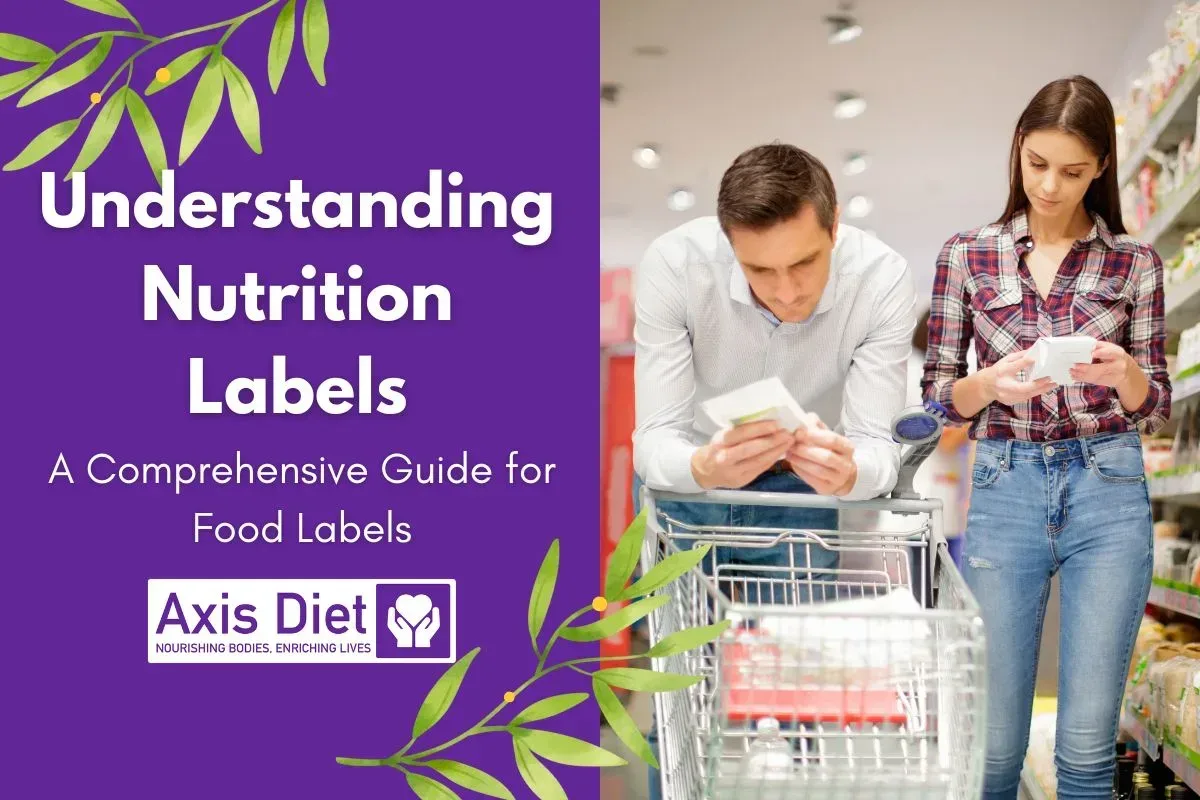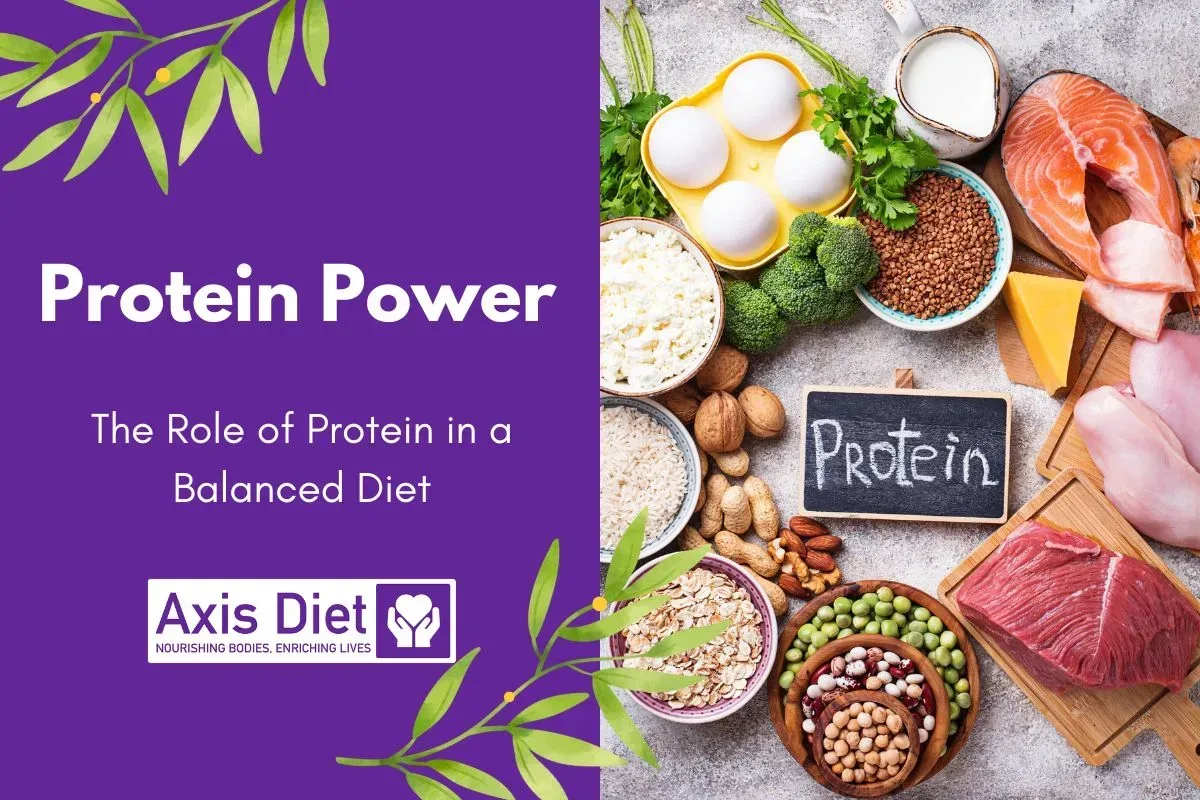The ability to read and understand nutrition labels is an essential skill for anyone looking to make healthier dietary choices. Here at Diet Axis, we’re committed to helping you navigate the often-confusing world of nutrition labels. Today, we’re diving deep into the world of nutrition labels in India, as recommended by the ‘Eat Right India’ initiative by FSSAI (Food Safety and Standards Authority of India).
Why Are Nutrition Labels Important?
Nutrition labels provide crucial information about what’s inside your food. They can help you make informed decisions about what you eat, compare different products, and manage dietary allergies and intolerances.
Understanding the Key Components of Nutrition Labels
Here’s a closer look at the information you’ll find on nutrition labels in India:
- Name of the Food – This refers to the standardized name or a common or generic name of the food product.
- List of Ingredients – Ingredients are listed in descending order of weight. So, the first ingredient listed is the one used most in the product. Watch out for high sugar or salt content right at the top of the list.
- Nutritional Information or Nutrition Facts – This is the breakdown of the nutrients contained in the food, which usually includes energy (calories), protein, carbohydrate, sugar, fat, and sodium.
- Net Quantity – This shows the weight or volume of the food in the package.
- Code No./Batch No./Lot No. – This is a unique code that helps identify the batch that the food product was manufactured in, for recall purposes if necessary.
- Date Marking – This includes the date of manufacture or packing, and the best before or use-by date. It’s crucial to use the food product before this date for safety and quality reasons.
- Country of Origin – For imported foods, the country of origin is stated.
- Instructions for Use – Some food products may include instructions for preparation and use.
- FSSAI Logo and License Number – The FSSAI logo and license number indicate that the food product is compliant with the FSSAI’s food safety and standards regulations.
Serving Size and Net Weight
When reading a nutrition label, one of the first things to check is the serving size and net weight. Here’s how you can make sense of these:
- Serving Size – The serving size is typically listed near the top of the label. This could be given as the number of servings per container/packet or the weight/volume of one serving in grams (g) or milliliters (ml). Keep in mind, though, that what you consider a serving and what the manufacturer considers a serving might be different.
- Net Weight – This is the total weight of the food product contained in the package, excluding the weight of the package itself.
- Nutrition Facts per Serving/100g/100ml – Most labels will provide nutritional information per serving or per 100 grams or 100 milliliters of the food product. This makes it easier to compare nutritional information across different food products.
- Multiplying Servings – Be aware that if you eat more than one serving, you will need to multiply all the nutritional information by the number of servings you eat. For example, if a packet contains two servings and you eat the whole packet, you are consuming double the calories and nutrients listed on the label.
Understanding serving size and net weight is key to interpreting nutrition labels correctly. So next time you pick up a packet of food, be sure to check these details before you dig in.
How to Decode Nutritional Information
Nutrition labels often carry health claims that can sound very attractive but can also be quite misleading if not understood correctly. Here’s a closer look at what some of these claims mean:
- “No Added Sugars” or “Unsweetened” – When you see these claims, it means that no extra sugars or sweetening ingredients have been added to the product. However, it doesn’t mean the food is sugar-free. The product might still contain naturally occurring sugars, so make sure to check the ‘Carbohydrates (of which sugars)’ amount on the label.
- “Low Fat” – This term is only used for products that contain 3g or less fat per 100g for solids, or 1.5g or less per 100ml for liquids. However, ‘low fat’ doesn’t necessarily mean ‘low calorie.’ The product could still be high in sugar, so it’s important to check the ‘Energy’ section on the label.
- “High in Protein” – For a food to be considered high in protein, at least 20% of its energy should be provided by protein. Keep in mind that while a high-protein diet can be beneficial for many people, too much protein can lead to kidney damage over time, particularly for people with certain health conditions.
- “Natural” – This term is not strictly regulated and may not guarantee healthiness. A ‘natural’ food could still be high in sugar, salt, or fat.
- “Organic” – In India, for a product to be labelled ‘organic,’ it must be produced according to certain standards of organic farming, which typically involve restrictions on the use of artificial fertilisers, pesticides, and genetically modified organisms. ‘Organic’ doesn’t necessarily mean a product is healthier or lower in calories than non-organic alternatives.
- “Whole Grain” – Whole grain foods contain all parts of the grain — the bran, germ, and endosperm. Foods labelled as ‘whole grain’ have more fibre and nutrients than refined grains. However, some products only contain small amounts of whole grains but are labelled as ‘whole grain’. Check the ingredients list to see if whole grain is listed as the first ingredient.
Remember, understanding nutrition labels is just the first step towards a healthier diet. Stay tuned to Diet Axis for more nutritional guidance, tailored specifically for the Indian audience.






[…] Regularly monitor your blood glucose levels to understand how different foods affect you. Adjust your diabetes diet […]
[…] of mindfulness and awareness regarding food intake. It’s not just about limiting portions but understanding the nutritional content of those portions too. This awareness is crucial in fostering a balanced diet, which is […]
[…] grounded in research and expert insights, aim to simplify complex nutritional concepts, offering a comprehensive understanding of various aspects of diet and wellness. While these articles are informative and a great starting […]
[…] to read and understand food labels. Look for products with fewer ingredients, and avoid those with added sugars, salts, and artificial […]
[…] you for joining us in this journey of understanding and embracing the power of nutrition. Remember, the path to health is personal and ever-evolving, and we are here to support you every […]
[…] other fermented dairy often have labels indicating the presence of live and active cultures. Understanding how to read these food labels are your first clue to the probiotic potential of the […]
[…] strategies is your ticket to bringing home the finest of low-calorie, filling foods. It begins with understanding nutritional labels, deciphering the information to make informed choices. Opting for fresh, seasonal produce and […]